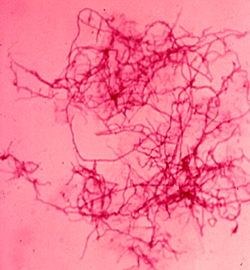
Accurate identification of bacterial isolates is an essential task of the clinical microbiology laboratory that enables initiation of proper antimicrobial therapy. For many organisms, traditional phenotypic identification may be difficult, laborious and time-consuming. This issue is further confounded by phenotypic variation within species, many newly described pathogenic species and the limited battery of phenotypic tests available to distinguish among all established and potential bacterial pathogens. It is sometimes essential to identify bacterial isolates to species level in order to rule out species that are drug resistant or more pathogenic, to detect unsuspected pathogens, ascribe pathogenicity to species so far considered to be nonpathogenic and to identify new bacterial species.
With more than 100,000 sequences available in public databases (e.g. NCBI), 16S ribosomal RNA gene (rRNA) sequencing is considered by current taxonomists to be the gold standard in bacterial identification and classification. 16S rRNA gene contains conserved regions useful for the design of broad-range PCR primers that can amplify various fragments of the 16S rRNA gene from all pathogenic and nonpathogenic bacteria. These fragments include hypervariable regions containing species-specific signature sequences useful for bacterial identification to species level. In some instances, alternate genes such as hsp65, rpoB or recA are sequenced when 16S is not adequate for species level identification.
UWMC Molecular Diagnosis section maintains a rapidly growing DNA database that contains DNA sequences from phenotypically validated bacterial strains. Phenotypic tests included morphological characterization, biochemical tests, HPLC and GLC for fatty acid analysis, and susceptibility testing. The final identification of organism is based on sequence alignment (BLAST) with our local database as well as the public database at NCBI and sequence based phylogenic trees.